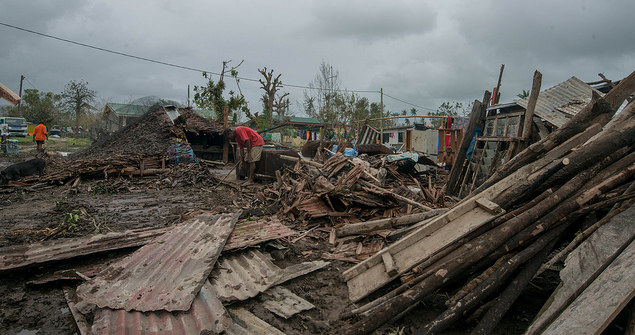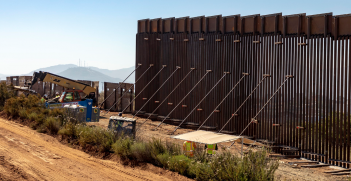Disaster Risk Management – Adapting to the Future

In the wake of Cyclone Pam’s devastation in Vanuatu, it is increasingly apparent that Disaster Risk Reduction will become crucial to mitigate the consequences of natural disasters.
This week the world saw the devastation that a natural disaster can cause. The islands of Vanuatu were in the centre of Cyclone Pam’s path, a category 5 cyclone which has wrought devastation across the small island nation with 24 confirmed deaths and 70 per cent of the population displaced. Natural disasters have a devastating effect on nations. Not only do they inflict high numbers of casualties, they also destroy infrastructure, homes and economies which can take years to rebuild.
It was against this backdrop that the Third United Nations World Conference on Disaster Risk Reduction (DRR) was held this week. Since 1994 these conferences have sought to coordinate an international response to the threat of natural disasters. This year the Conference’s objective has been to review the Hyogo Framework for Action, with the aim to create resilience against future crises, based not on destructive capabilities and frequency of current natural disasters, but on those that will confront the globe in the future.
The cost of natural disasters
According to the UN between 2000 and 2012 1.2 million people were killed and 2.9 billion affected by natural disasters, with the economic damage estimated at US$1.7 trillion during this period. UN Secretary General Ban Ki-moon announced at the conference that natural disasters cost the world US$250-300 billion annually. Whilst these disasters affect all nations, they are particularly harmful in developing nations, as these nations lack the funding and resources to recover from and adapt to natural disasters.
The need for improved Disaster Risk Reduction in the face of climate change
In an emotional address to the Conference the President of Vanuatu, Baldwin Lonsdale, blamed climate change for the increasing occurrence of cyclones making landfall in Vanuatu, which in the past were quite rare. His claims have been supported by Laurent Fabius, the incoming president of the Conference of Parties to the United Nations Framework Convention on Climate Change, when he stated that today 70 per cent of natural disasters have been tied to climate change, around twice as many as 20 years ago. With this trend increasing, the need to prepare the globe against these more frequent and hazardous natural disasters has become a central theme of the Conference.
The response to future threats
Climate change continues to threaten future development, as such the Conference has placed a significant emphasis on securing people, as well as national and private infrastructure, against future natural disasters. The emphasis has been placed on investing in disaster resistant measures now, rather than rebuilding after a disaster. France’s Minister for State noted that it was cheaper to build well in the first place, especially in those countries at the greatest risk from climate change. This sentiment was echoed by UN Secretary General Ban Ki-moon who stated that for every dollar spent on DRR the world will gain seven dollars, US$6 billion allocated each year could save up to $360 billion by 2030. Initiatives include creating and implementing a standard disaster resistant building code, managing improper use of land, providing natural disaster education and most importantly building strong government institutions which are able to adapt and respond to natural disasters.
Nations that invest in DRR will certainly be better able to recover economically and socially from natural disaster, and with the increasing frequency of these disasters the need for this investment is becoming more prominent globally. The message emerging from the Conference is that this is not just a threat to individual nations. With the increased interconnectivity of the world’s economy, regional crises will inevitably affect the global economy. The Third United Nations World Conference on Disaster Risk Reduction response to these crises has been to establish that DRR must be global, a response that coordinates the finance and skills of the globe to ensure that each nation is as well prepared for natural disasters as is possible.
The significance for Australia
The World Risk Index ranks risk through a combination of exposure to natural hazards and the vulnerability of the society. Five of the top ten at risk nations worldwide lie within Oceania in Australia’s immediate region. Due to this sheer geographical proximity, it will fall on Australia and New Zealand to provide the assistance to help rebuild these communities as is happening in the wake of Cyclone Pam in Vanuatu. Australia has pledged an initial $5 million worth of aid, New Zealand $2.5 million and Britain and France $3.86 million. In light of the Conference’s proposal to invest in future risk reduction it would seem to be in Australia’s interest to invest this aid into improving Vanuatu’s security against future crisis. As Secretary General Ban Ki-moon suggested, investment in risk reduction now would require less traditional aid in the future.
James Downie is an intern at the AIIA National Office. This article can be republished with attribution under a Creative Commons Licence.





